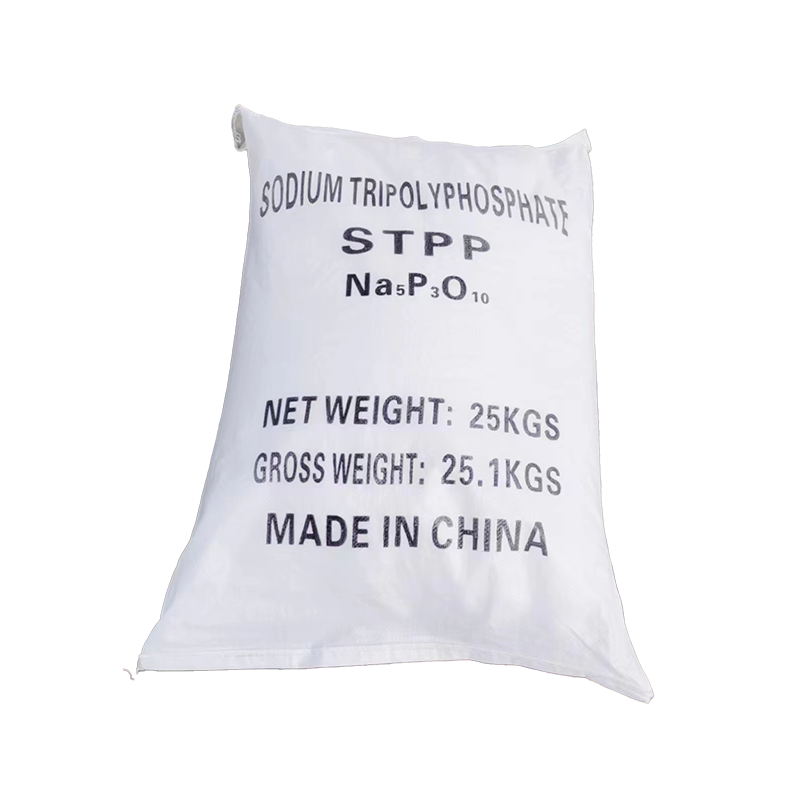Exploring the Role of STPP in Modern Detergent Formulations: A Comprehensive Guide
2025-06-20
Exploring the Role of STPP in Modern Detergent Formulations
Table of Contents
1. Introduction to STPP in Detergents
2. What is Sodium Tripolyphosphate (STPP)?
3. Chemical Properties of STPP
4. Functions of STPP in Detergent Formulations
5. Benefits of Using STPP in Detergents
6. Environmental Impact of STPP
7. Regulatory Aspects Surrounding STPP
8. Future Outlo

Exploring the Role of STPP in Modern Detergent Formulations
Table of Contents
- 1. Introduction to STPP in Detergents
- 2. What is Sodium Tripolyphosphate (STPP)?
- 3. Chemical Properties of STPP
- 4. Functions of STPP in Detergent Formulations
- 5. Benefits of Using STPP in Detergents
- 6. Environmental Impact of STPP
- 7. Regulatory Aspects Surrounding STPP
- 8. Future Outlook for STPP in Cleaning Products
- 9. Frequently Asked Questions
- 10. Conclusion
1. Introduction to STPP in Detergents
Sodium Tripolyphosphate (STPP) has long been a fundamental ingredient in the formulation of household and industrial detergents. This compound not only enhances the cleaning efficiency of detergents but also contributes to the overall performance of various cleaning products. In this article, we will explore the significance of STPP in modern detergent formulations, its chemical properties, functions, benefits, environmental considerations, and future trends.
2. What is Sodium Tripolyphosphate (STPP)?
Sodium Tripolyphosphate is a sodium salt of tripolyphosphoric acid. It appears as a white, crystalline powder and is soluble in water. STPP is classified as an inorganic chemical, primarily utilized in various applications across industries, including food processing, ceramics, and—most prominently—detergent formulations. The compound serves multiple purposes, ranging from acting as a builder to enhancing the cleansing properties of surfactants in cleaning products.
3. Chemical Properties of STPP
Understanding the chemical properties of STPP is essential for grasping its role in detergent formulations. Here are some key properties:
3.1 Molecular Formula and Structure
The molecular formula of STPP is Na5P3O10, consisting of sodium (Na), phosphorus (P), and oxygen (O) atoms. Its structure comprises three phosphate groups, which confer its unique properties.
3.2 Solubility and Stability
STPP is highly soluble in water, making it effective in detergent formulations. It maintains stability under a range of pH levels, which is crucial for ensuring consistent performance in various cleaning applications.
3.3 pH Regulation
The compound can help regulate pH levels in detergents, ensuring optimal performance and stability of the other ingredients.
4. Functions of STPP in Detergent Formulations
STPP performs several critical functions within detergent formulations. Its multifaceted role enhances the overall efficacy of detergents, making it a staple in the industry.
4.1 Water Softening Agent
One of the primary functions of STPP is its ability to soften water. Hard water contains high levels of calcium and magnesium, which can interfere with the cleaning action of detergents. STPP binds these metal ions, thereby preventing them from reacting with surfactants and reducing their effectiveness.
4.2 Enhancer of Detergency
STPP enhances the cleaning power of surfactants by improving their ability to break down and remove dirt and stains. It does this by facilitating the dispersion of soil and allowing surfactants to work more effectively.
4.3 Anti-redeposition Agent
As a powerful anti-redeposition agent, STPP prevents dirt and grime from adhering back onto fabrics during the washing process. This ensures that clothes come out cleaner and fresher after each wash.
4.4 Stabilization of Enzymes
In enzyme-based detergents, STPP acts as a stabilizer, enhancing enzyme activity while protecting them from degradation. This function ensures that enzymes can effectively break down organic stains, making them more effective than traditional detergents.
5. Benefits of Using STPP in Detergents
The inclusion of STPP in detergent formulations offers several advantages that contribute to its widespread use in the industry.
5.1 Improved Cleaning Efficiency
With its ability to soften water and enhance the effectiveness of surfactants, STPP significantly improves cleaning efficiency. This means that less detergent is required to achieve the same level of cleanliness, making it economical for consumers.
5.2 Versatility in Formulations
STPP can be used in a variety of detergent types, including powder, liquid, and gel forms. This versatility allows manufacturers to tailor their products to meet specific consumer needs.
5.3 Compatibility with Other Ingredients
The compound is compatible with various other ingredients commonly used in detergent formulations, including surfactants, builders, and enzymes. This compatibility ensures that STPP can be easily incorporated into existing formulations without negatively impacting performance.
5.4 Cost-Effectiveness
By enhancing the efficacy of detergents, STPP contributes to overall cost savings for both manufacturers and consumers, making it a cost-effective choice in detergent formulations.
6. Environmental Impact of STPP
While STPP offers numerous benefits in detergent formulations, concerns have been raised about its environmental impact. Understanding these concerns is essential for developing sustainable cleaning products.
6.1 Eutrophication Risks
One of the primary environmental concerns associated with STPP usage is its potential contribution to eutrophication. Excessive phosphorus in water bodies can lead to algal blooms, which deplete oxygen levels and harm aquatic life. The detergent industry must address this issue by exploring alternative compounds and formulations that mitigate environmental impacts.
6.2 Regulatory Scrutiny
Due to its environmental implications, STPP faces increasing regulatory scrutiny. Many countries are implementing stricter regulations on phosphorus content in detergents, prompting manufacturers to seek alternative solutions or reduce STPP concentrations in their formulations.
7. Regulatory Aspects Surrounding STPP
The regulatory landscape surrounding STPP is evolving, driven by environmental concerns and public health considerations. Understanding these regulations is crucial for manufacturers to ensure compliance.
7.1 International Regulations
Various international organizations and countries are implementing regulations aimed at controlling phosphorus levels in detergents. For instance, the European Union has established guidelines that limit the amount of phosphorus in household detergents to protect water quality.
7.2 Industry Response
In response to regulatory pressures, many manufacturers are actively seeking alternatives to STPP or optimizing their formulations to reduce phosphorus content. This includes incorporating biodegradable ingredients and developing phosphate-free products.
8. Future Outlook for STPP in Cleaning Products
The future of STPP in detergent formulations is characterized by both challenges and opportunities. As the industry evolves, several trends are emerging.
8.1 Transition to Sustainable Alternatives
The increasing demand for environmentally friendly products is driving manufacturers to explore sustainable alternatives to STPP. Innovations in biodegradable surfactants and alternative builders are gaining traction, reflecting a shift towards greener formulations.
8.2 Advancements in Formulation Technology
Emerging technologies in formulation chemistry may provide solutions that enhance cleaning performance while reducing environmental impact. These advancements could allow for the development of STPP-free formulations that still deliver effective cleaning results.
8.3 Consumer Awareness and Demand
As consumers become more environmentally conscious, their preferences will shape the future of detergent formulations. Manufacturers will need to prioritize sustainability in their product offerings to meet evolving consumer demands.
9. Frequently Asked Questions
9.1 What are the main uses of STPP in detergents?
STPP is primarily used as a water softener, a cleaning enhancer, an anti-redeposition agent, and an enzyme stabilizer in detergent formulations.
9.2 Is STPP harmful to the environment?
While STPP is effective in cleaning, its phosphorus content can contribute to eutrophication if not managed properly. Regulatory bodies are working to address these environmental concerns.
9.3 Are there alternatives to STPP in detergent formulations?
Yes, several alternatives exist, including biodegradable surfactants and other phosphate-free builders that can perform similar functions without environmental risks.
9.4 How can the use of STPP be regulated?
Regulatory measures include limiting phosphorus content in detergents, promoting sustainable alternatives, and ensuring compliance with environmental laws.
9.5 What is the future of STPP in the detergent industry?
The future of STPP is shifting towards sustainable alternatives and innovations in formulation technologies, driven by consumer demand for environmentally friendly products.
10. Conclusion
Sodium Tripolyphosphate (STPP) plays a vital role in modern detergent formulations by enhancing cleaning efficiency, softening water, and stabilizing enzymes. Despite its benefits, environmental concerns and regulatory scrutiny are prompting the industry to seek sustainable alternatives. As manufacturers adapt to changing consumer preferences and regulatory requirements, the detergent landscape is evolving. Understanding the role of STPP and its implications is essential for stakeholders in the detergent industry. The ongoing innovation in formulation technology and the emergence of eco-friendly alternatives will shape the future of cleaning products, ensuring that they meet both performance standards and environmental responsibilities.


 TESFA STPP
TESFA STPP